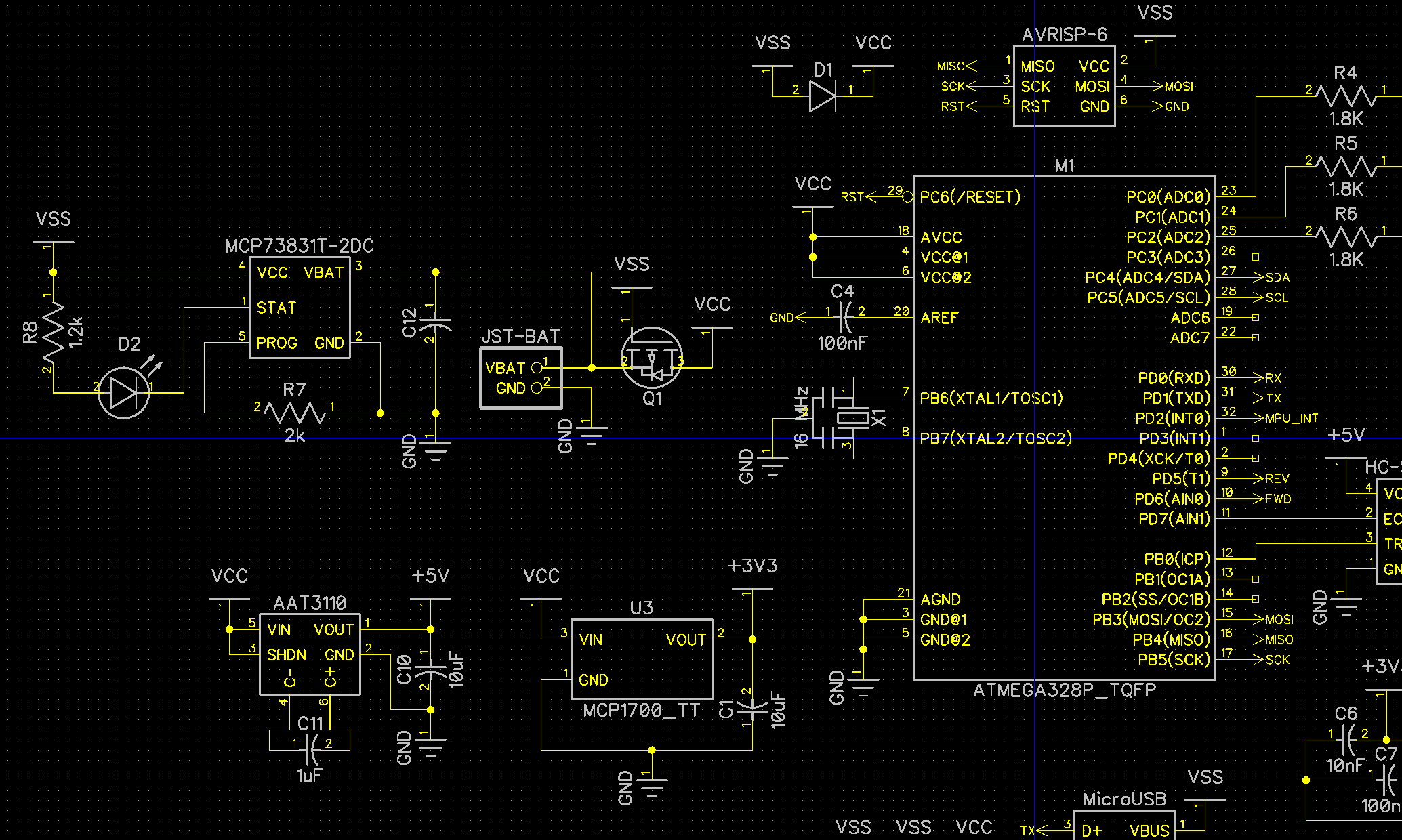I haven't done a deep dive into the current hardware revision, but now seems a good time to update the BOM in the spirit of THP.
This is the current HW schematic (DipTrace, by the way), and I'll just briefly point out the parts of especial interest to HaD and the sponsors:
- ATMega328P: Of course, we have a very popular AVR running the show. The TQFP package is remarkably easy to work with at the home lab level, and of course the chips themselves take a lot of abuse when prototyping. I've deployed dozens of these across the various prototypes Pathfinder has been through, and it isn't leaving anytime soon. (Low power, simple layout, easy SW dev). When we get closer to production, however, I'll consider moving to an ARM chip (SAM series, maybe?) that might offer more HW amenities at the price of increased complexity.
- MCP7381: The venerable LiPo charger IC found in so many designs. Very easy to work with compared to some of the very fine pitch DFNs other ICs come in, and the power rating (500ma) is great for a wearable system. Also the best price/performance I could find in reliable stock, so it was an easy choice.
- MCP1700: A simple 3.3V LDO, chosen for its low cost, tiny package, and clean output. It feeds the IMU on a private voltage rail, providing a layer of much needed immunity from the noisy haptic motors.
- TI DRV2603: Unfortunately, this chip has not been worked into the schematics yet, but will be included on the next stepping. It's a little complex, and it took me a while to get the samples working on a little testbed a built. Now, I'm comfortable enough to bring the IC into the main design, where it will replace a primitive discrete H-bridge that has given me a bit of a headache to date. I picked this chip to seamlessly drive LRA motors, which offer much improved haptic feedback experiences over ERMs. Being able to outsource the complex frequency matching and drive patterns to this chip allows me to focus on the user experience vs. implementation semantics. I'm glad to work with a prevalidated solution, and can't wait to get the drivers onboard. Should be a few weeks or so, but I already have a proven (if on a testbed) layout, so it should be relatively easy.
That's all for now, but I'll update the project description soon to better reflect all the progress we've made over the past year. Thanks!

Discussions
Become a Hackaday.io Member
Create an account to leave a comment. Already have an account? Log In.